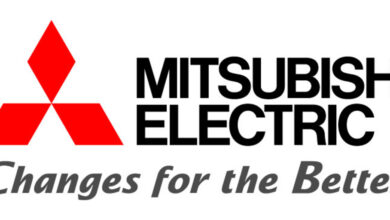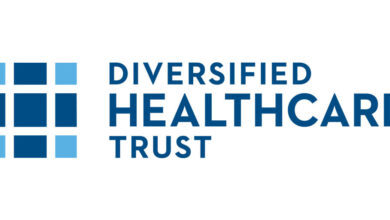Global Breast Imaging Devices Market Opportunities and Strategies to 2030 – Non-Ionizing Segment is Forecast to be the Fastest Growing Technology Segment, at a CAGR of 6.1% During 2020-2025 – ResearchAndMarkets.com

DUBLIN–(BUSINESS WIRE)–The “Breast Imaging Devices Global Market Opportunities And Strategies To 2030, By Product Type, Technology, End User” report has been added to ResearchAndMarkets.com’s offering.
The global breast imaging devices market reached a value of nearly $3,841.2 million in 2020, having increased at a compound annual growth rate (CAGR) of 3.5% since 2015. The market is expected to grow from $3,841.2 million in 2020 to $5,088.8 million in 2025 at a CAGR of 5.8%. The market is then expected to grow at a CAGR of 4.9% from 2025 and reach $6,449.8 million in 2030.
Growth in the historic period in the breast imaging devices market resulted from growth in the number of healthcare facilities, economic growth in emerging markets, rapid technological advances, rising prevalence of breast cancer and aging female population. The market was restrained by low healthcare awareness, low healthcare reimbursements, high costs of mammography systems and concerns over radiation.
Going forward growing awareness for early detection of breast diseases, rising use of diagnostic medical imaging, increasing investment and funding for breast cancer treatments will drive the growth in the breast imaging device market. Factors that could hinder the growth of the market in the future include challenges due to high costs of breast imaging systems, challenges due to regulatory changes and COVID-19 pandemic.
The breast imaging devices market is segmented by procedure type into tomosynthesis, breast ultrasound, breast MRI, mammography, nuclear imaging, and others. The mammography market was the largest segment of the breast imaging devices market segmented by procedure type, accounting for 42.6% of the total in 2020. Going forward, the breast ultrasound segment is expected to be the fastest growing segment in the breast imaging devices market segmented by product, at a CAGR of 6.09% during 2020-2025.
The breast imaging devices market is segmented by technology into ionizing and non-ionizing. The ionizing market was the largest segment of the breast imaging devices market segmented by technology, accounting for 66.5% of the total in 2020. Going forward, the non-ionizing segment is expected to be the fastest growing segment in the breast imaging devices market segmented by technology, at a CAGR of 6.1% during 2020-2025.
The breast imaging devices market is segmented by end-user into hospitals and clinics, breast care centers, and diagnostic imaging centers. The hospitals and clinics market was the largest segment of the breast imaging devices market segmented by end-user, accounting for 37.1% of the total in 2020. Going forward, the diagnostics imaging centers segment is expected to be the fastest growing segment in the breast imaging devices market segmented by end-user, at a CAGR of 6.1% during 2020-2025.
North America was the largest region in the global breast imaging market, accounting for 39.8% of the total in 2020. It was followed by the Asia Pacific, Western Europe and then the other regions. Going forward, the fastest-growing regions in the breast imaging devices market will be Middle East and Africa where growth will be at CAGRs of 9.6% and 9.58% respectively. These will be followed by Asia Pacific and Western Europe, where the markets are expected to register CAGRs of 8.2% and 5.9% respectively.
The top opportunities in the breast imaging devices market segmented by procedure type will arise in the mammography segment, which will gain $514.7 million of global annual sales by 2025. The top opportunities in the breast imaging devices market segmented by technology will arise in the non-ionizing segment, which will gain $791.9 million of global annual sales by 2025. The top opportunities in the breast imaging devices market segmented by end-user will arise in the hospitals and clinics segment, which will gain $424.3 million of global annual sales by 2025. The breast imaging devices market size will gain the most in the USA at $263.2 million.
Report Scope:
Markets Covered:
- By Product Type: Tomosynthesis; Breast Ultrasound; Breast MRI; Mammography; Nuclear Imaging; Others
- By Technology: Ionizing; Non Ionizing
- By End User: Hospitals & Clinics; Breast Care Centers; Diagnostic Imaging Centers
Countries: China; Australia; India; Indonesia; Japan; South Korea; USA; Brazil; France; Germany; UK; Russia
Regions: Asia-Pacific; Western Europe; Eastern Europe; North America; South America; Middle East; Africa
Time series: Five years historic and ten years forecast.
Data: Ratios of market size and growth to related markets; GDP proportions; expenditure per capita; breast imaging devices indicators comparison.
Data segmentations: country and regional historic and forecast data; market share of competitors; market segments.
Companies Mentioned
- Siemens Healthcare
- GE Healthcare
- Hologic, Inc.
- FUJIFILM Holdings Corporation
- Canon
- Philips Healthcare
- Aurora Imaging Technology Inc.
- Delphinus Medical Technologies
- Micrima Limited
- SonoCine Inc.
For more information about this report visit https://www.researchandmarkets.com/r/bdlz2
About ResearchAndMarkets.com
ResearchAndMarkets.com is the world’s leading source for international market research reports and market data. We provide you with the latest data on international and regional markets, key industries, the top companies, new products and the latest trends.
Contacts
ResearchAndMarkets.com
Laura Wood, Senior Press Manager
[email protected]
For E.S.T Office Hours Call 1-917-300-0470
For U.S./CAN Toll Free Call 1-800-526-8630
For GMT Office Hours Call +353-1-416-8900


